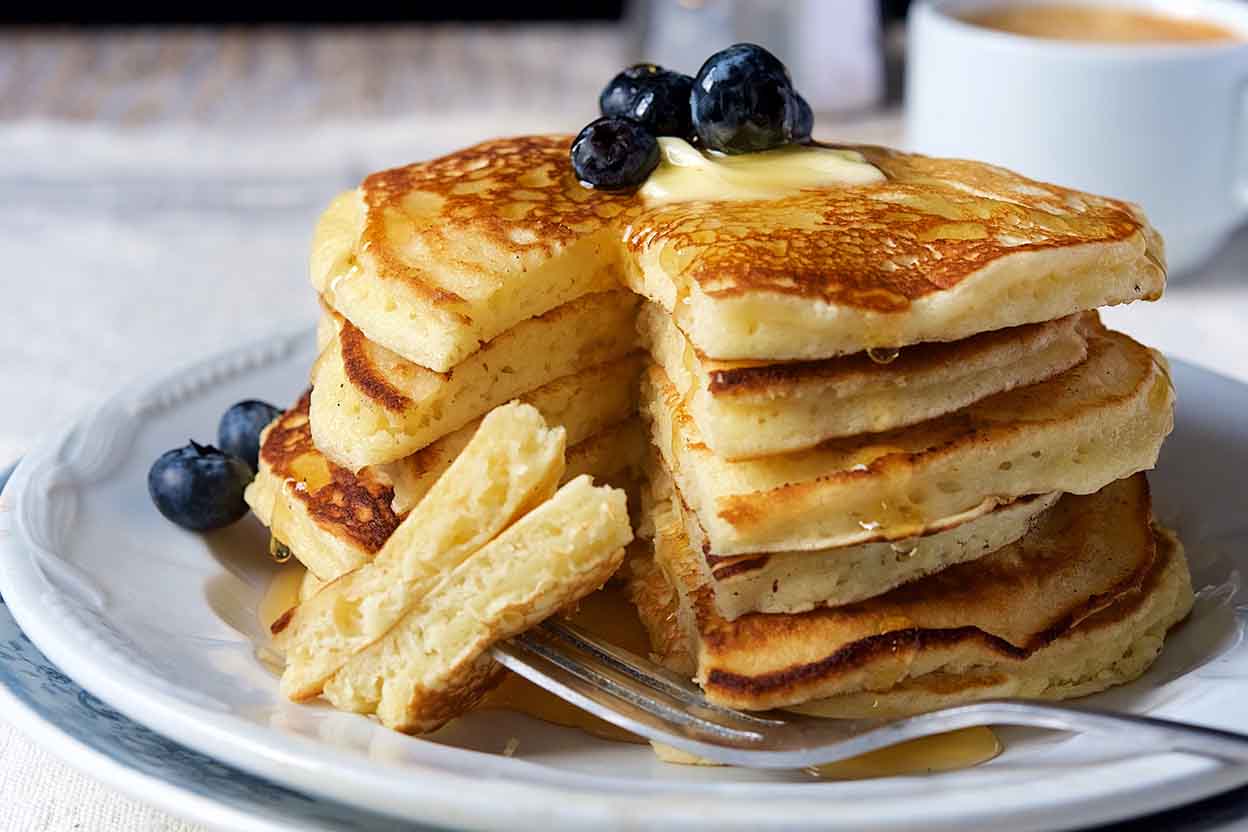For my project, I chose to test the outcome of the pancakes by the frequency in which I flipped them at when cooking. It turns out, What I hypothesized was incorrect, but before I knew it I ended up getting myself in a “sticky situation”. (Laugh)
The Chemistry
Because flour consists of two different proteins (named glutenin and gliadin), these proteins link together when moistened to form gluten. This triggers the first reaction to take part in the making of the pancakes when mixing the flour with the wet ingredients. Another chemical reaction that takes place is when baking soda and buttermilk react together. Because baking soda is a alkaline powder (a base) and buttermilk is acidic, they encounter the second reaction with the outcome of salt, water, and carbon dioxide which forms in the bubbles in the pancake batter. The last reaction is what’s known as the Millard’s reaction takes place when the pancake is actually cooking. As the temperature of which you’re cooking your pancake at increases, the amino acids which make up the proteins begin to chemically bond with carbon and oxygen atoms from sugars. This gives the pancake not only is color, but also
it’s taste.

Experiment and Results
The independent variable in my project was the flipping of the pancakes.
Ingredients/Materials
- Gather your ingredients together, butter your skillet/pan, and set heat to 350. Let your pan heat before cooking.
- In a large bowl, mix your dry ingredients of 1 1/2 cups all-purpose flour, 3 1/2 teaspoons baking powder, 1 teaspoon salt, 1 tablespoon white sugar.
- Simply, pour in your wet ingredients of 1 1/4 cups milk, 1 egg, and 3 tablespoons butter, melted while mixing.
- “Beat it! Beat it!”
- Pour batter (approximately ¼ cup each) into pan
Trial one- 5 Flips
The pancake of trial one was very fluffy yet burnt. It was also the thickest. Although, it had a very salty and bitter taste due from how cooked it was.
Trial two - 15 Flips
This pancake was not really burned nor dark, it was just right. The pancake was cooked thoroughly and was also fluffy. This pancake seemed to be neither dark or light with a more golden tone. It formed crust around the edges and had small air bubbles inside.
Trial three - 25 Flips
This pancake was the lightest and least burned of the three. It was more of a dull tone than anything. This pancake was also the flattest and widest of the three.
Basically what we can come to realize is that the Frequency of flipping the pancake has a huge impact on how the pancake will turn out itself. We can see, the pancake not only relies on how much you flip it, but how much time you have to flip it. If the pancake is being flipped most of the cooking time, it won't be cooked thoroughly; but if it hasn’t been flipped enough, it’ll burn on the side it stayed the longest on. This affects not only how the pancake looks but also how the pancake taste.


Comments
Post a Comment